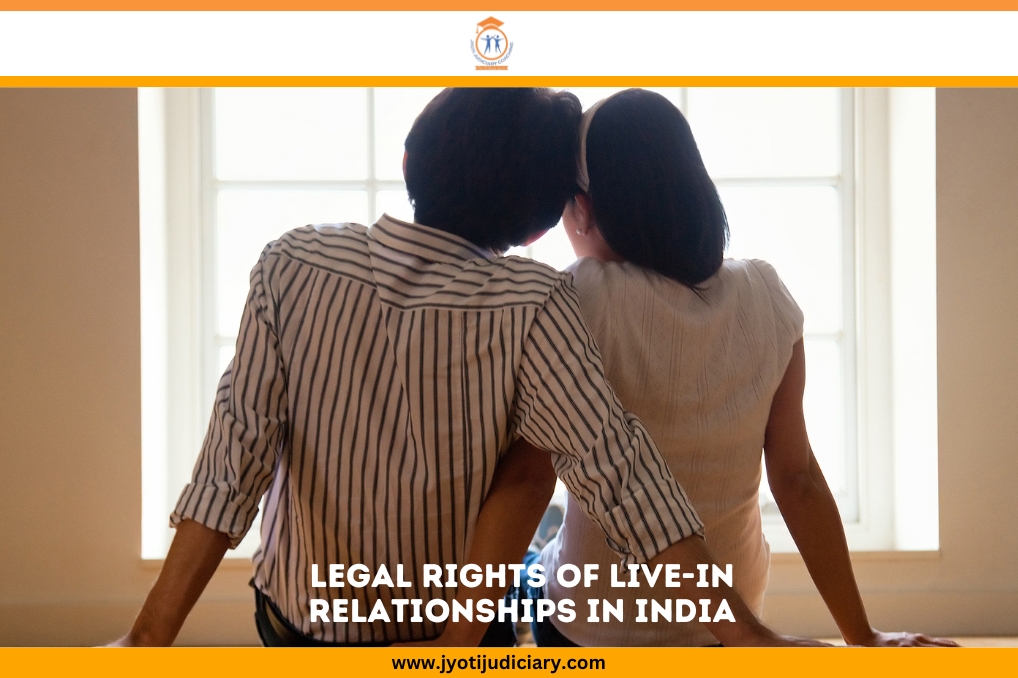
In recent years, live-in relationship has gained significant prominence in India, challenging traditional societal norms and redefining the concept of companionship. This non-marital cohabitation arrangement, wherein couples choose to live together without getting married, has sparked debates regarding their legal status and the rights of individuals involved. This article aims to delve into the current state of live-in relationships in India, exploring the rights of individuals in such partnerships and highlighting key Supreme Court judgments that have shaped the legal landscape.
What are Live-in Relationships?
A live-in relationship is an arrangement where two individuals, irrespective of gender, choose to live together in a committed relationship without undergoing a formal marriage ceremony. This concept has been prevalent in Indian society for centuries, often referred to as “Gandharva Vivaha” or “Swayamvara” in ancient texts. However, it is only in recent times that live-in relationships have gained recognition as an alternative to traditional marriage.
There are several reasons why the youth of India are choosing live-in relationships over marital relationships.
- Western culture: Due to migration to cities, people tend to follow the Western culture, where live-in relationships have already been normalized.
- Testing compatibility: It is said that live-in relationships provide enough time to test the other partner before coming into an unbreakable marriage union.
- Not hindering education or other career opportunities, a traditional marriage includes so many formalities that in some way affect personal growth. But live- in- relationships doesn’t affect personal life progress.
Legal Status and Rights
In India, there is no separate law or statutory enactment governing the live-in-relationships. Though live-in relationships are legal in India there is no live-in relationship Act in India. It is only through judicial pronouncements that the following rights of the live-in-couples have been recognized or live-in relationships law in India has developed.
Right to Live Together:
The Indian Constitution grants every individual the right to live with dignity. The Supreme Court has recognized live-in relationships as a legitimate way of life, affirming that two consenting adults have the freedom to choose their living arrangements under Article 21 as a facet of the ‘Right to Life’. Religion shall also not be taken as a hindrance in exercising this right.
Right to Maintenance:
In 2010, the Supreme Court ruled that women in live-in relationships are entitled to maintenance if they separate from their partners. This decision aimed to protect the rights of women who may face financial hardships due to the breakdown of relationships.
Right to Inheritance:
In 2013, the Supreme Court held that children born out of live-in relationships have the same inheritance rights as children born in wedlock. This judgment aimed to eliminate discrimination against children born to unmarried parents. However, they shall not be entitled to inherit the ancestral property. The property rights come only from the father and mother.
Domestic Violence Protection:
The Protection of Women from Domestic Violence Act, of 2005, extends its protection to women in live-in relationships. This legislation recognizes the vulnerability of women in such arrangements and provides them with legal remedies against domestic violence.
Supreme Court Judgments
The following judgments of the Supreme Court have been instrumental in upholding and protecting the rights of live-in relationship couples.
- D. Velusamy vs. D. Patchaiammal (2010): In this landmark judgment, the Supreme Court recognized live-in relationships as valid and granted protection to women involved. The court laid down certain criteria to determine the existence of a live-in relationship, including long-term cohabitation, holding themselves out as a couple, and having a shared household.
- Indra Sarma vs. V.K.V. Sarma (2013): The Supreme Court held that a live-in relationship that lasts for a considerable period and is proven to be a relationship akin to marriage would be eligible for maintenance under Section 125 of the Code of Criminal Procedure. This judgment aimed to ensure the financial security of women in live-in relationships.
- Khushboo vs. Kanniammal (2010): The Supreme Court emphasized the importance of respecting individuals’ rights to choose their partners and live-in relationships, stating that moral policing has no place in a democratic society. This judgment highlighted the need to embrace progressive attitudes towards relationships.
- Lalita Toppo vs. State of Jharkhand (2018): The Supreme Court held that a live-in relationship between two adults cannot be considered an offense under the law, even if it may be deemed immoral by some sections of society. This judgment reinforced the principle of personal autonomy and upheld the right to choose one’s living arrangement.
- Lata Singh v, State of UP and Anr. (2006): Two consenting adults, engaging in a sexual relationship without marriage is not an offence, though it might seem immoral to some persons.
Rights not available to the Live-in-relation couples
While live-in relationships in India have gained recognition and legal protection, there are still certain rights that may not be available to couples in such arrangements. Some of these rights include-
1. Right to Alimony:
Unlike married couples who are entitled to alimony or spousal support in case of separation or divorce, individuals in live-in relationships may not have the same legal recourse for financial support from their partner.
2. Right to Property:
In the absence of a legal marriage, couples in live-in relationships may not have automatic rights to each other’s property or assets. In case of separation or death, disputes regarding property ownership may arise.
3. Adoption Rights:
While the Supreme Court has recognized the rights of children born out of live-in relationships, adoption laws in India may still pose challenges for couples in such arrangements who wish to adopt a child together.
Read to know: Abortion Rights in India
4. Social Security Benefits:
Married couples are often eligible for various social security benefits, such as health insurance, pension, and survivor benefits. These benefits may not be available to individuals in live-in relationships.
5. Surrogacy rights:
Couples in live-in-relationships can’t have their children through surrogacy as per the Surrogacy Regulation Act, of 2021.
Conclusion:
The status of live-in relationships in India has evolved significantly over the years, with the Supreme Court playing a crucial role in recognizing and protecting the rights of individuals involved in such partnerships. While live-in relationships are still subject to societal scrutiny and moral judgments, legal frameworks have still evolved, and there have been ongoing discussions and debates regarding the extension of certain rights to couples in such arrangements.









